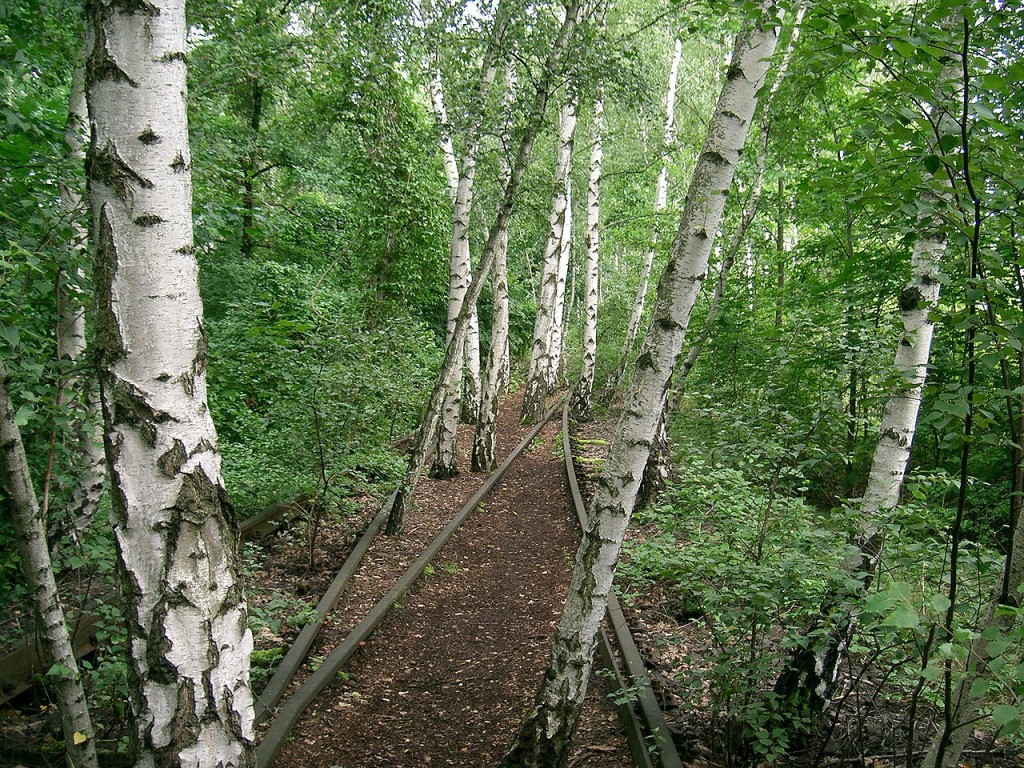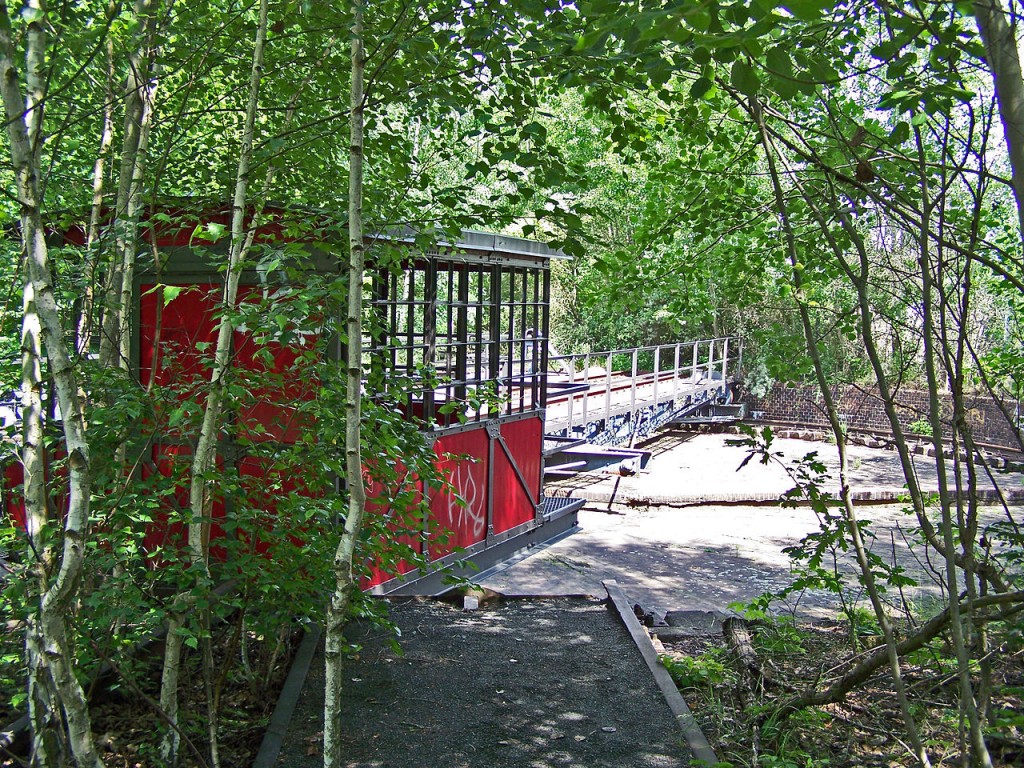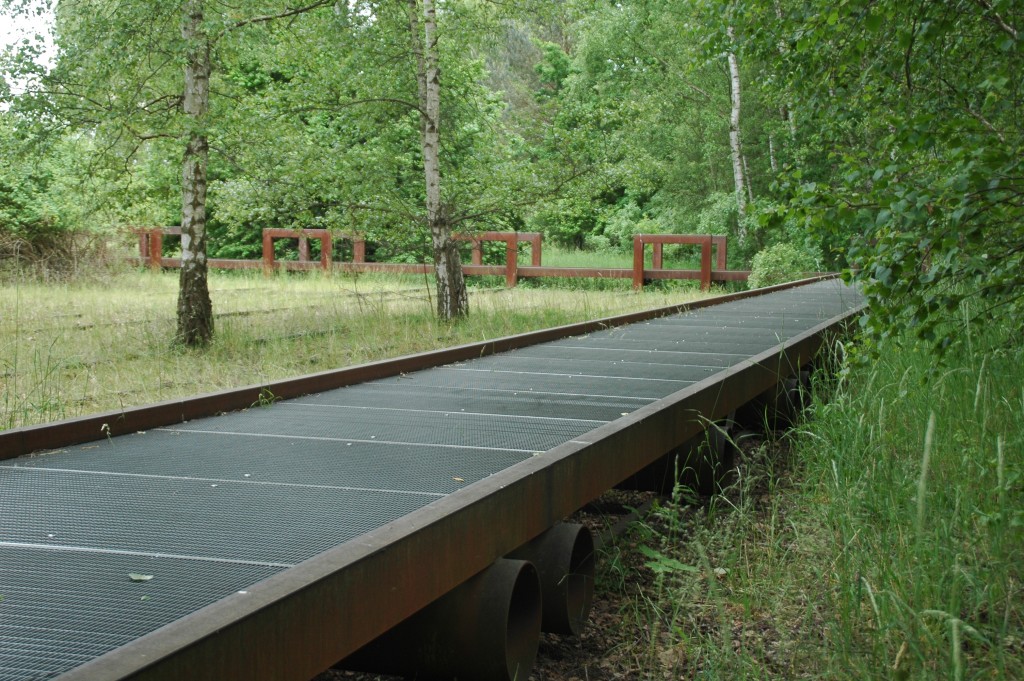
Nature Park Schöneberger Südgelände is a good example of spontaneous nature on an industrial location. The former railway yard (from 1890) in the Tempelhof-Schöneberg district had been left to nature in anticipation of a new destination since the 1950s. When plans were made to reuse the area, people started protesting. As compensation for projects around the Potsdamerplatz, Deutsche Bahn then donated 18 hectares of the terrain to the municipality of Berlin. In 1999, the site was declared a nature reserve. This does not mean it remained untouched from then on, though. With a few design interventions, respecting the wild, spontaneous situation, the area was opened to visitors, and a number of ecological characteristics were strengthened. The area is home to habitats with dry grassland, parts that are rich in herbs, and dense woods with birches and acacias. More than 95 wild bee species and 50 bird species were sighted here, and there are 350 rare plant species, including rare ferns and mushrooms. Elevated walkways were placed over the dry grassland to prevent it from being damaged because of the recreation. Volunteers help to maintain the park, for instance when the woods have to be thinned out. The former railway buildings in the park have cultural functions now and one is in use as a café. Remnants of the old steel structures and rails (with an old locomotive) are now scattered through the park as a reminder of the industrial past.
-BERLIN (D) 1998
-INGO KOWARIK AND ANDREAS LANGER
more info:website Stadtentwicklung Berlin

